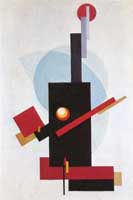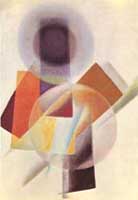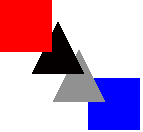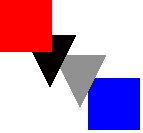|
|||||||||
| The Constructivist Modeler | Java Applet | Aug 1999 | ||
Demo VersionsSo far, rules have been established that can be used to interprete any sequence of squares and cirlces that overlap. Rules have also been established for the overlapping of a square on a triangles on a squares. However, some possible combinations of shapes are still not defined.
If a square overlaps with a triangle, then an implicit source assumed to be connected via a flow arc to the output of the triangle. Likewise, if a triangle overlaps a square, then a source is assumed to be an input to the triangle. I'm still not completely sure what to do for cases where a triangle is the input for another triangle. Two possibilities come to mind. First, if two triangles pointing up overlap, then the rate that they define is proportional to the square of their input. If n triangles are chained together, then their rate is proportional to the first triangle's input to the nth power. For n triangles pointing down, the output would be proportional to the input raised to the -nth power. Under this scheme, an upward pointing triangle and a downward pointing triangle would cancel each other out and establish a linear relationship to their input. This advantage to this scheme is that it allows for nonlinear relationships to be represented. The second possibility is that multiple triangles would define a rate with a cause-and-effect arc, but no input level. Currently, this is not a possibility since cause-and-effect arcs are defined as a part of the input of a rate.
Rules for two squares Rules for upward pointing triangles Rules for downward pointing triangles Back to the Constructivist Modeler Applet Back to the Constructivist Modeler Rules |
|||





